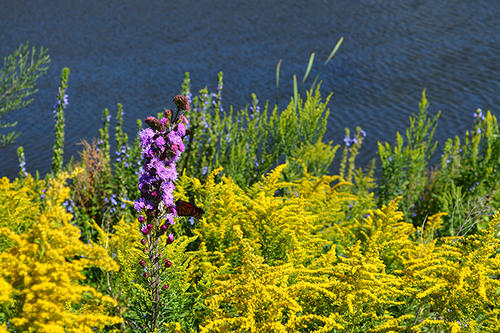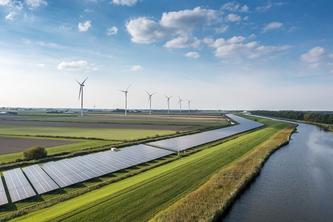
Watching a butterfly treat a patch of green grass like flyover land, Jeremiah Cunningham realized the greenery offered the insect nothing to eat.
The grass was doing its job—preventing erosion near an Xcel Energy substation—but Cunningham, a U construction management student interning with Xcel, wondered why soil-saving plantings couldn’t do double duty. Since Xcel already had people working on pollinator-boosting projects, Cunningham worked with several of them to turn the areas around substations into pollinator territory by replacing the standard highway seed mix with native prairie grass.
This move also saves money, as native prairie grass needs less maintenance. After doing a cost-benefit analysis and mapping out how the project would take shape, Cunningham presented it to Xcel managers. The company is now putting it into practice at new substation sites in Monticello and Chaska.
“In addition to creating nectar corridors for pollinators like bees, butterflies, bats, and hummingbirds, prairie grass helps pull tons of carbon out of the atmosphere every year,” Cunningham notes. “The way I see it, there are two solutions to saving wild pollinators. Give them more land, and get energy companies involved. The best way to source available land is to use open areas around substations and under transmission lines.”
It will take three or four years for the native plants to get established, but when they do they’ll offer pollinators a rich spread of milkweed and wildflowers.
- Categories:
- Agriculture and Environment





